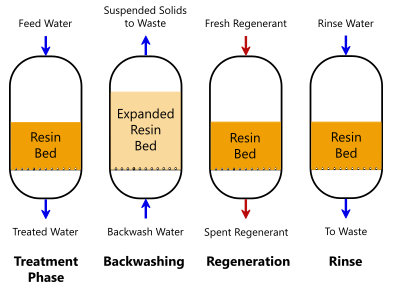Cutting-edge PFAS Therapy Solutions for Safer Water
The boosting frequency of PFAS contamination in water supplies demands an important examination of cutting-edge therapy remedies. Additionally, arising bioremediation techniques use a more lasting method to tackling PFAS difficulties. pfas management.
Review of PFAS Contamination
PFAS contamination has become a significant ecological and public health issue. Per- and polyfluoroalkyl compounds (PFAS) are a team of artificial chemicals recognized for their determination in the setting and human body, leading them to be generally described as "for life chemicals." These substances have actually been commonly made use of in various sectors, including firefighting foams, water-repellent textiles, and food product packaging, mostly as a result of their water- and grease-resistant homes.
The extensive usage of PFAS has led to their detection in dirt, water products, and also in the blood of human beings and pets. Studies have actually connected PFAS direct exposure to many wellness concerns, consisting of developing impacts in infants, body immune system disorder, and various kinds of cancer cells. In addition, the environmental persistence of these substances complicates their deterioration and removal, increasing worries regarding lasting ecological effects.
Regulative bodies are increasingly implementing rigid standards to monitor and lower PFAS degrees in alcohol consumption water and various other environmental tools. As recognition of PFAS contamination expands, it has come to be critical for neighborhoods and sectors to look for efficient treatment services to minimize exposure and secure public wellness.
Advanced Filtering Technologies
As the necessity to resolve PFAS contamination escalates, progressed filtration modern technologies have emerged as a pivotal part in the remediation efforts targeted at getting rid of these relentless chemicals from water resources. These modern technologies leverage innovative systems to efficiently target and capture PFAS substances, which are notoriously immune to standard treatment approaches.
Among one of the most promising techniques is the use of granular activated carbon (GAC), which adsorbs PFAS particles as a result of its high surface and permeable structure. This technique has been commonly executed in both community and industrial settings, demonstrating considerable decreases in PFAS concentrations. Furthermore, ion exchange materials have gotten grip, particularly made to selectively bind PFAS ions from water, hence facilitating their elimination.
Membrane layer filtering technologies, such as reverse osmosis and nanofiltration, also reveal efficiency in PFAS elimination by literally separating contaminants from water - pfas management. These systems can accomplish high degrees of pureness, making them ideal for drinking water applications
Chemical Treatment Developments
Many chemical treatment technologies are being checked out to effectively address PFAS contamination in water materials. One encouraging strategy includes using advanced oxidation procedures (AOPs), which use powerful oxidants such as ozone, hydrogen peroxide, or chlorine dioxide integrated with UV light to damage down PFAS substances into less damaging substances. This method has actually shown efficiency in laboratory setups, revealing potential for scalability in real-world applications.
Another innovative approach is the growth of ion-exchange resins particularly created to target PFAS. These resins can selectively adsorb PFAS substances from water, permitting their elimination during treatment procedures. Recent innovations have improved the effectiveness and capability of these resins, making them a desirable option for water treatment facilities.
Additionally, researchers are exploring the usage of chemical representatives like persulfate and ferrous ions to enhance the degradation of PFAS in polluted water. These agents can cause chain reaction that facilitate the breakdown of persistent PFAS substances.
Emerging Bioremediation Strategies
Recent advancements in chemical therapy advancements have actually paved the way for exploring bioremediation methods as a viable alternative for dealing with PFAS contamination. Bioremediation takes advantage of the all-natural metabolic procedures of bacteria to degrade or change contaminants, making it an attractive approach for tackling consistent contaminants like PFAS.
Arising techniques in bioremediation include using genetically crafted microorganisms that can specifically target and damage down PFAS substances. These microbial strains are being established for their boosted deterioration abilities, raising the efficiency of the remediation procedure. Furthermore, researchers are checking out the possibility of plant-assisted bioremediation, where certain plant varieties might uptake and sequester PFAS from contaminated have a peek at this site dirt and water.
An additional appealing method is the application of bioaugmentation, which entails presenting advantageous microbes right into infected environments to increase the deterioration of PFAS. This technique can facilitate faster removal timelines and boost overall effectiveness.

Regulative Structures and Requirements
An my website extensive regulative structure is essential for successfully taking care of PFAS contamination and making certain public wellness protection. The enhancing recognition of per- and polyfluoroalkyl materials (PFAS) as ecological pollutants has actually motivated different government and state companies to create standards that govern their visibility in water supplies. The U.S. Epa (EPA) has actually developed health and wellness advisories and is pursuing setting enforceable restrictions for PFAS in alcohol consumption water.
State-level regulations vary considerably, with some states adopting more stringent standards than those recommended by the EPA. These policies usually include optimum impurity degrees (MCLs) for specific PFAS compounds, monitoring demands, and reporting responsibilities for water energies. Furthermore, arising structures concentrate on the removal of infected websites, stressing the need for efficient treatment modern technologies.

Verdict
In final thought, the advancement and implementation of innovative PFAS treatment solutions are crucial for attending to the prevalent issue of water contamination. Advanced filtration technologies, chemical treatments, and emerging bioremediation strategies jointly offer a complex method to successfully decrease and break down PFAS degrees. As regulative frameworks continue to advance, integrating these modern technologies will be necessary to guard public health and wellness and recover the integrity of more helpful hints infected water sources, inevitably contributing to a cleaner and much safer environment.